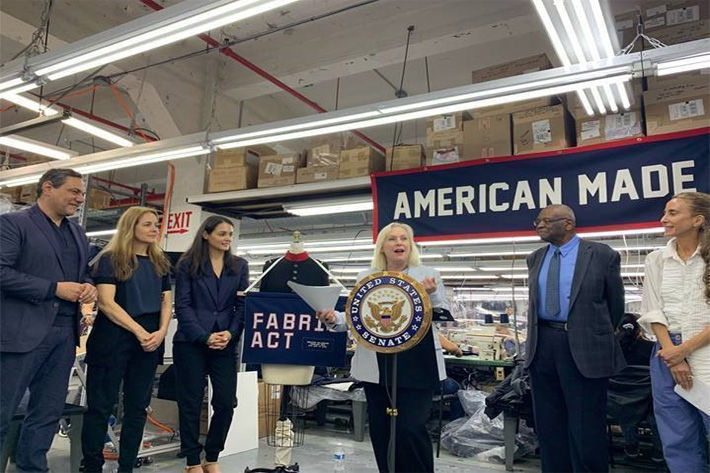FABRIC Act introduced in US Senate, to protect 100,000 garment workers

The act proposes to address these issues through five central pillars: restructuring pay rates and providing minimum wage as a floor with productivity incentives on top; establishing new liability measures that compel major retailers to become allies in combating workplace violations; introducing record-keeping and transparency measures; incentivising reshoring; and creating a domestic garment manufacturing grant programme aimed at revitalising the industry.
“Garment workers are a cornerstone of the American economy and, for far too long, have faced unsafe working conditions, wage theft and piecework pay, which often prioritises fast fashion over the safety of workers. Supply chain disruptions caused by the pandemic have only exacerbated these ongoing issues, which are disproportionately shouldered by women, people of colour and immigrant workers,” Gillibrand said in a press release.
Senators Bernie Sanders, Elizabeth Warren and Cory Booker are original cosponsors of the act.
“It’s time to take bold action at the federal level to change the fabric of the American garment manufacturing industry. The United States was once home to a booming apparel manufacturing industry, and it’s time to reexamine how this industry has evolved over the past 50 years and change how we treat our workers,” said Gillibrand.
Women are leaders in the US cut-and-sew apparel manufacturing industry, making up 61 per cent of workers, and witnessed heavy job losses during the pandemic.
“From designers to managers to workers, women overwhelmingly play a leading role in this important industry. However, garment workers in the United States are often underpaid, overworked and put in unsafe conditions. Protecting the garment workforce is a sustainability issue and has direct impacts on environmental sustainability, community development, gender equality and economic prosperity,” she said.
“This legislation would thread the needle of protecting workers’ rights, putting an end to abusive pay rates, and ensuring equitable compensation for garment workers, while also making historic investments in domestic garment manufacturing so we can not only make American, but buy American,” she added.
American garment workers face the second-highest rate of wage theft of any group of workers in the country, according to the press release. At its peak in April of 1973, the US apparel industry employed 1.4 million people. This number has steadily declined since. As of April 2022, only 93,800 Americans were employed in apparel manufacturing.
Today, apparel imports from China to the United States are over 10 times higher than 30 years ago, and between 1995 and 2020, China gained an estimated 1.25 million jobs in apparel and apparel-adjacent manufacturing while the United States lost roughly 700,000 jobs.
The US garment industry now loses out on approximately $30 billion annually that is instead imported from China.
Fibre2Fashion News Desk (DS)
































-Ltd..jpg?tr=w-120,h-60,c-at_max,cm-pad_resize,bg-ffffff)





.jpg?tr=w-120,h-60,c-at_max,cm-pad_resize,bg-ffffff)
.jpg?tr=w-120,h-60,c-at_max,cm-pad_resize,bg-ffffff)






